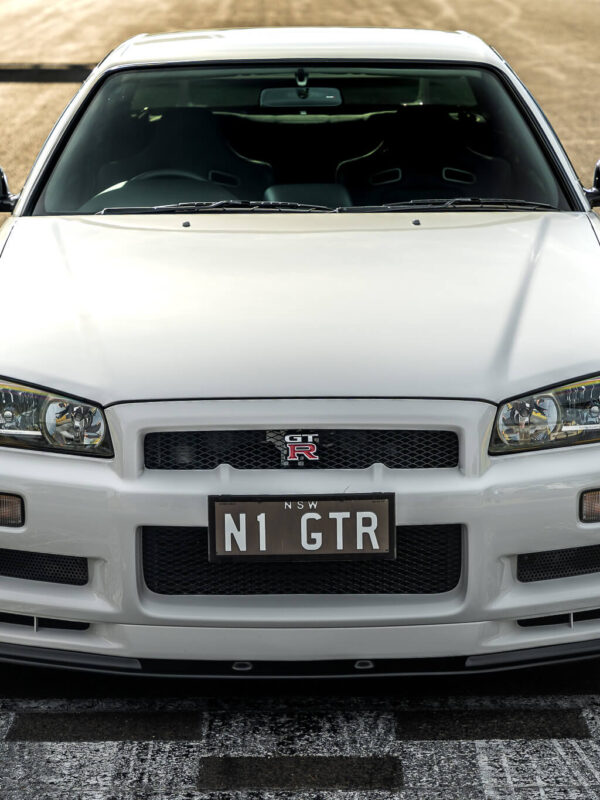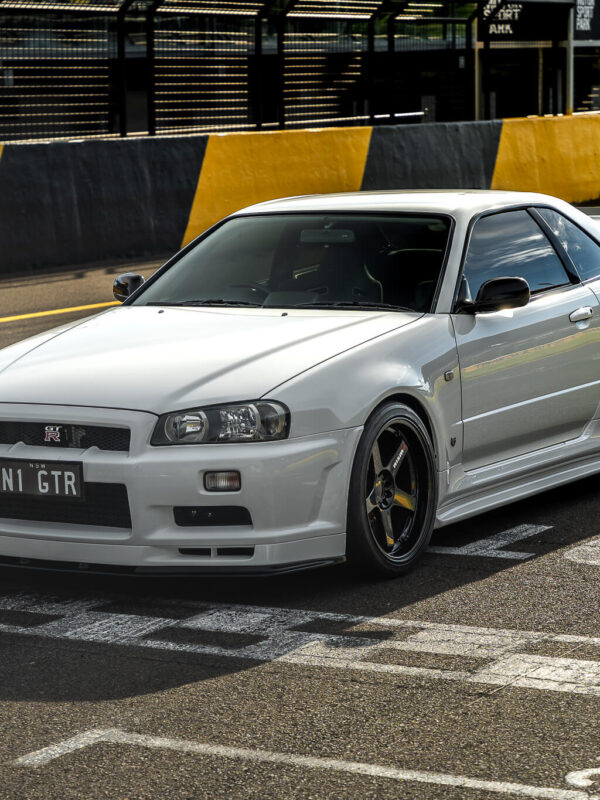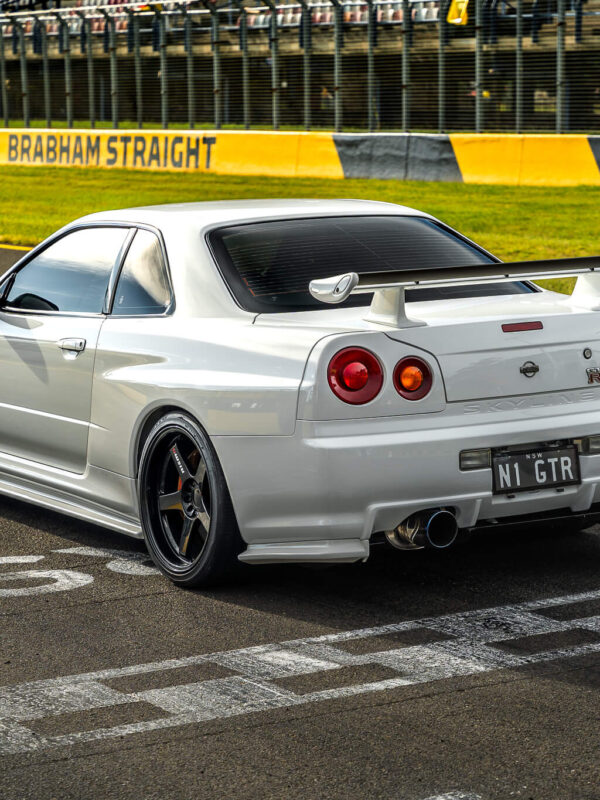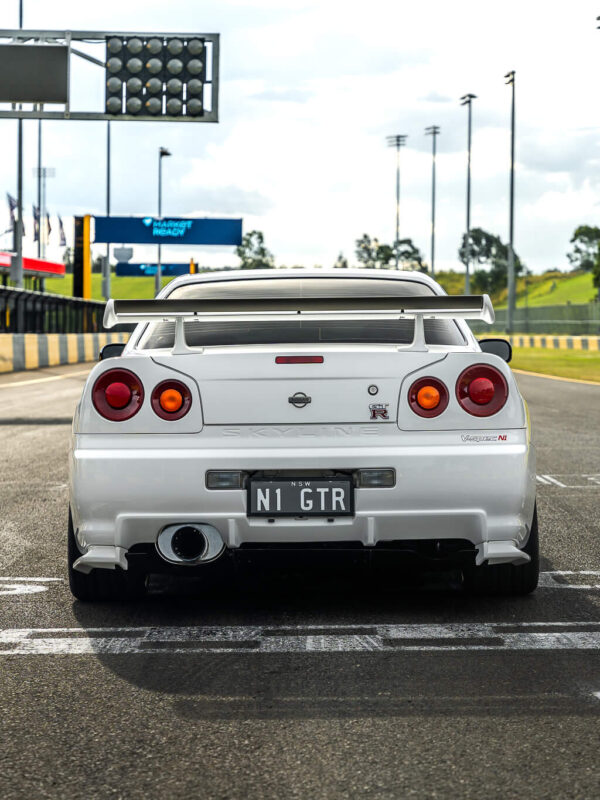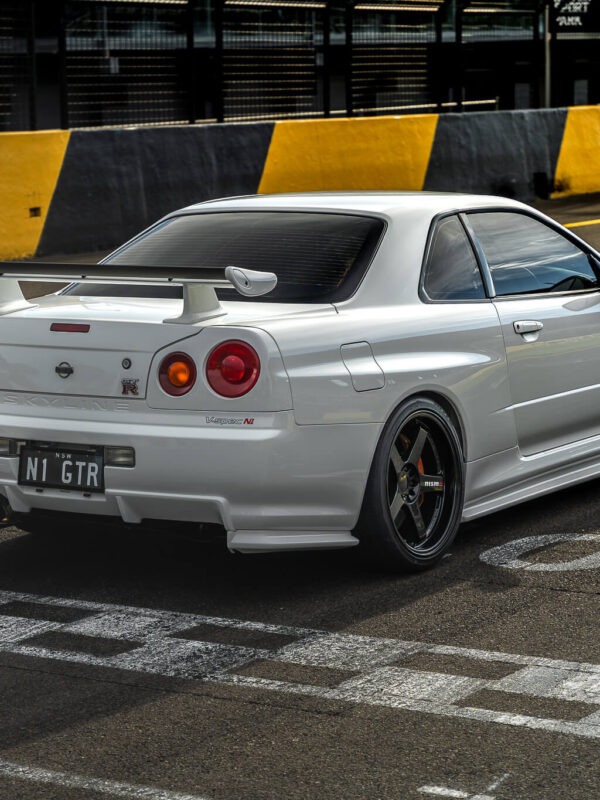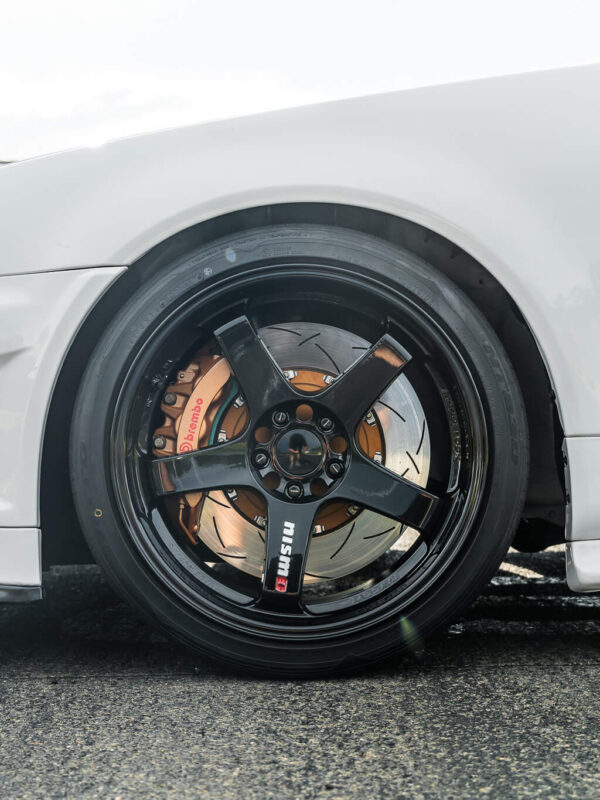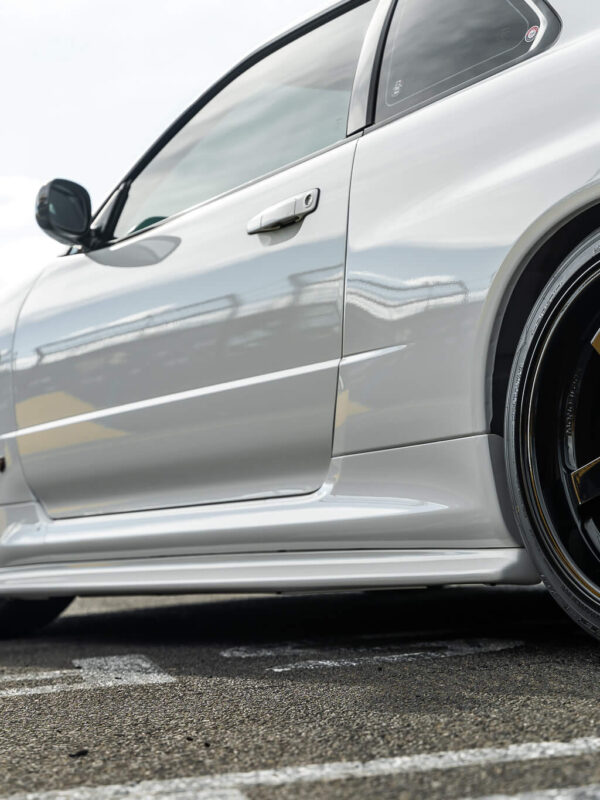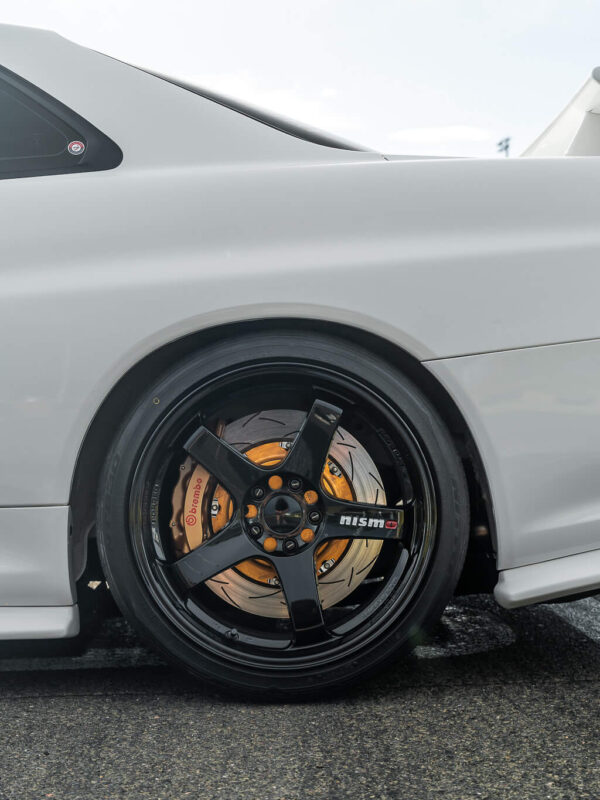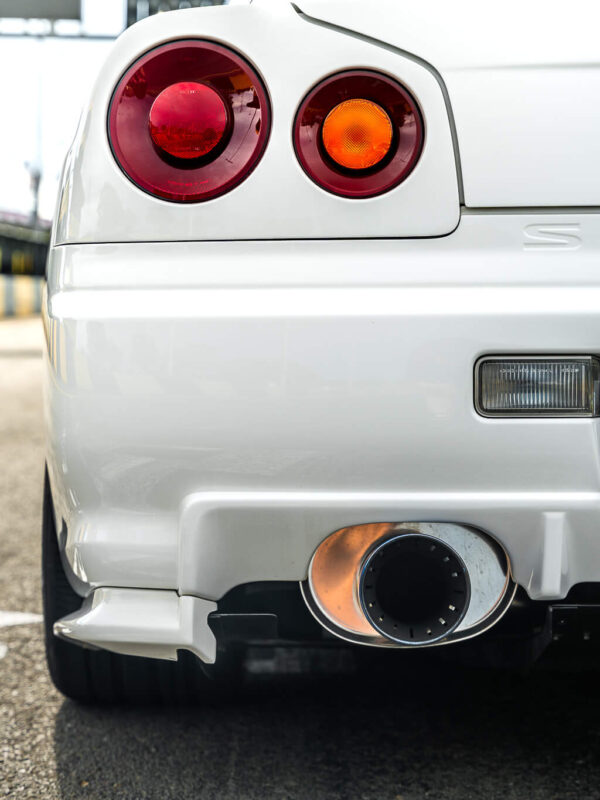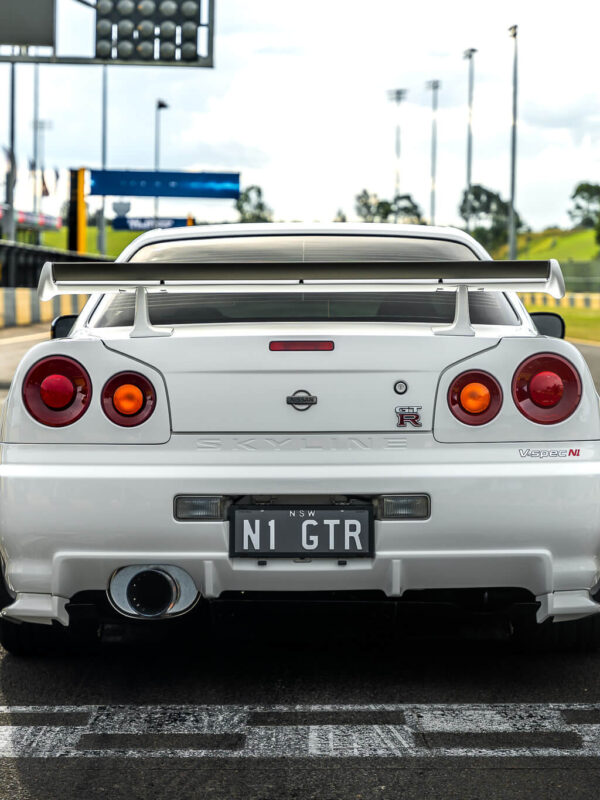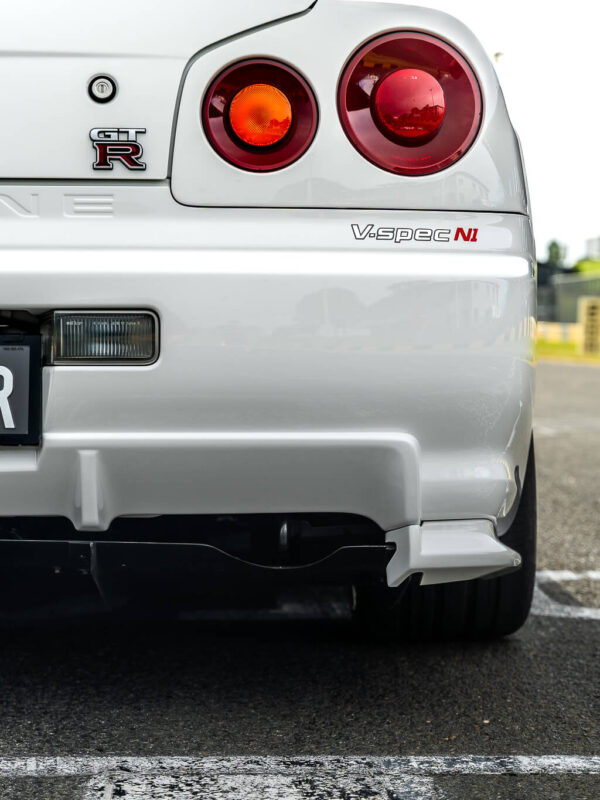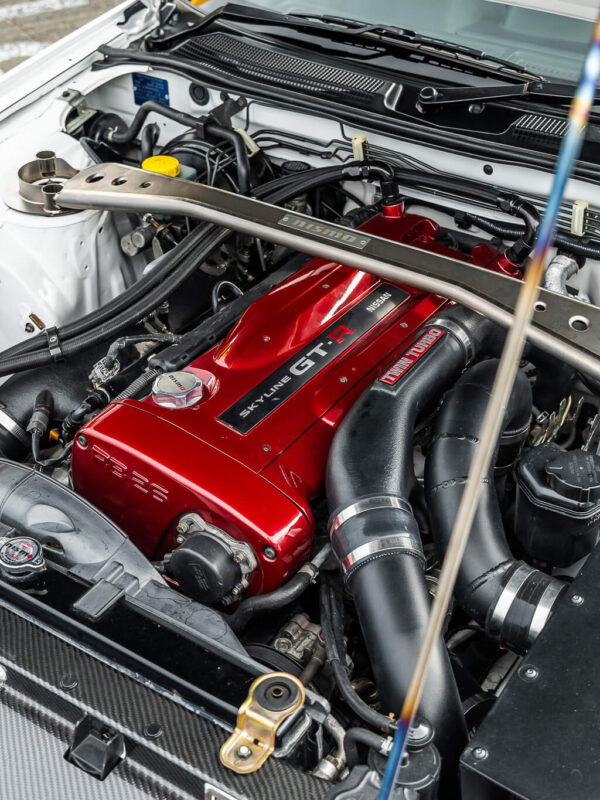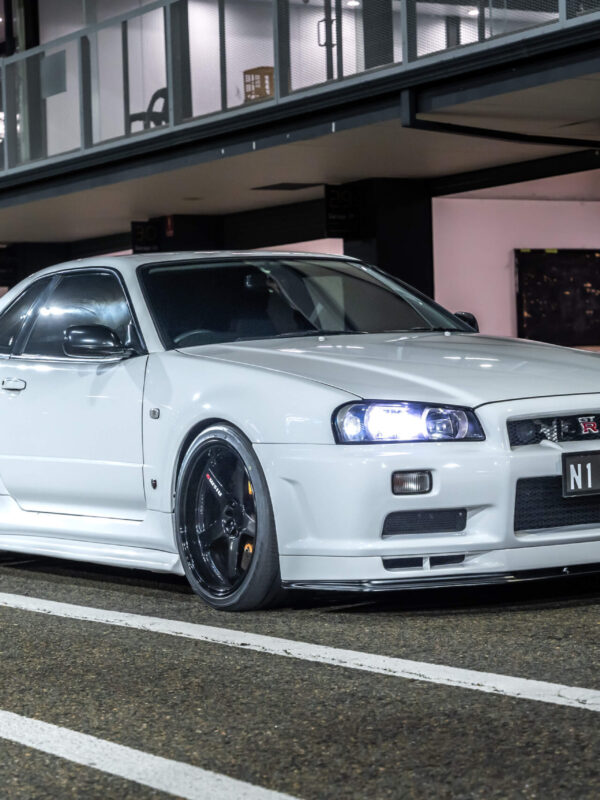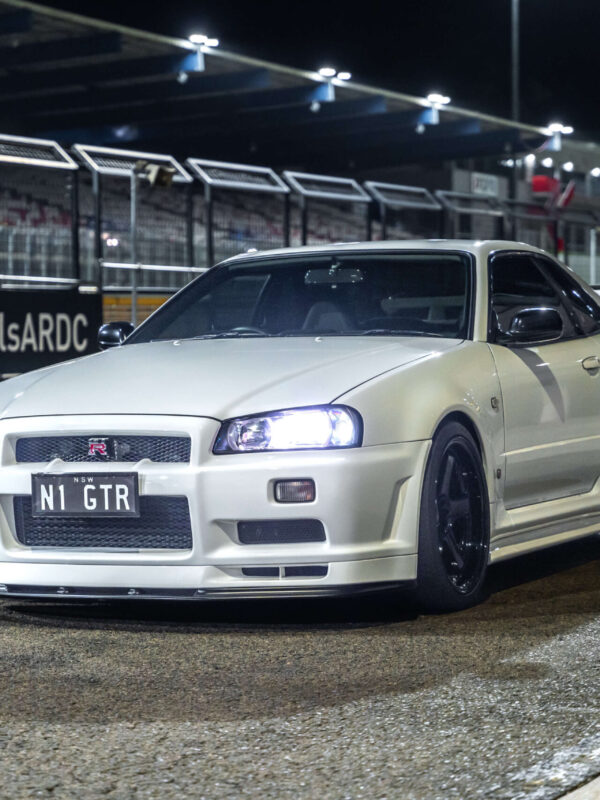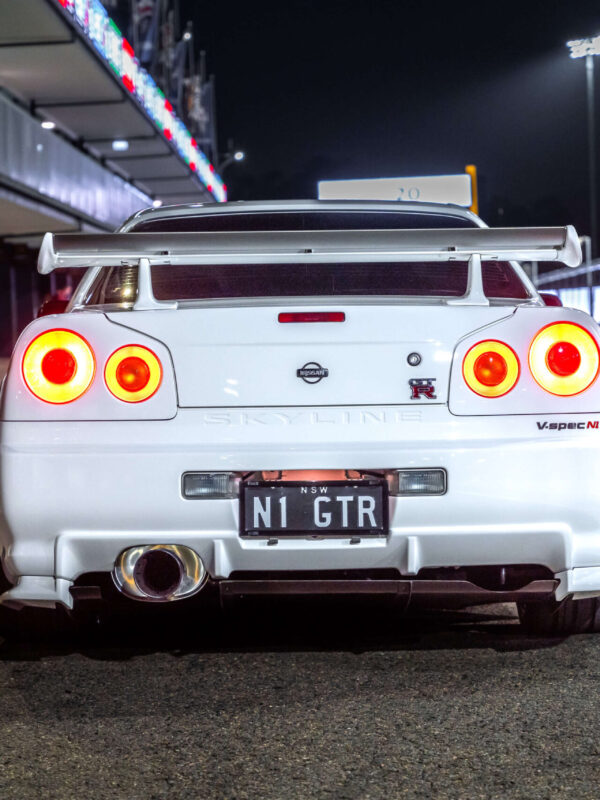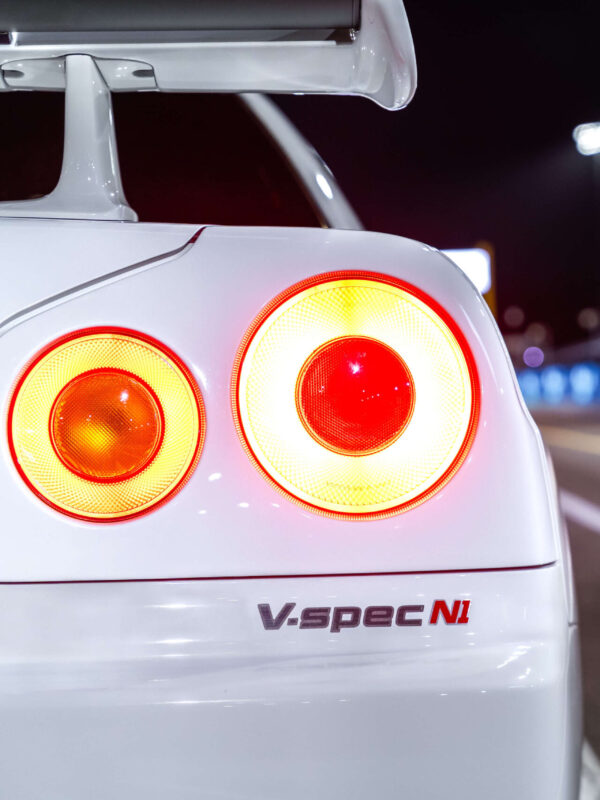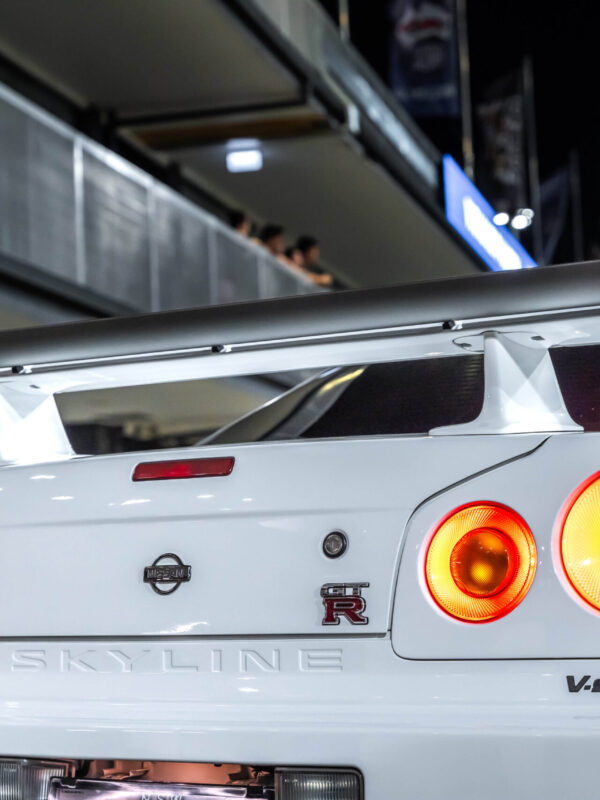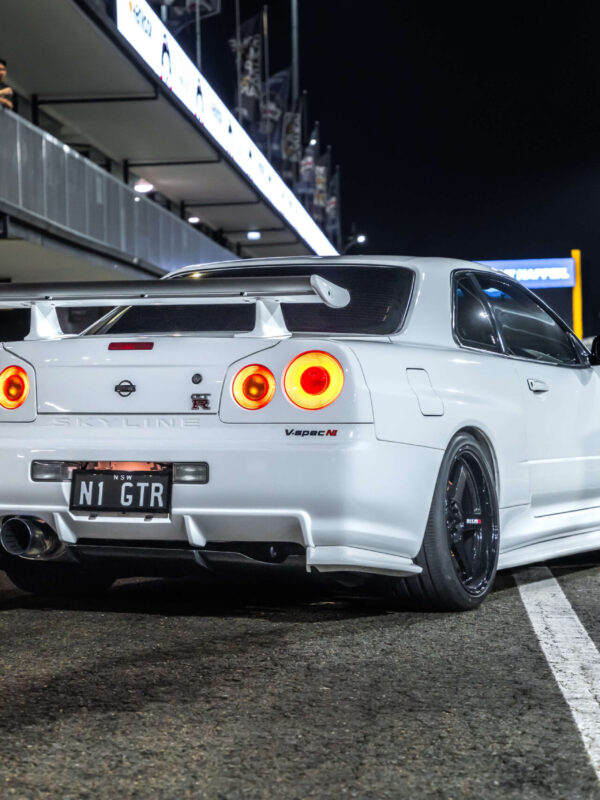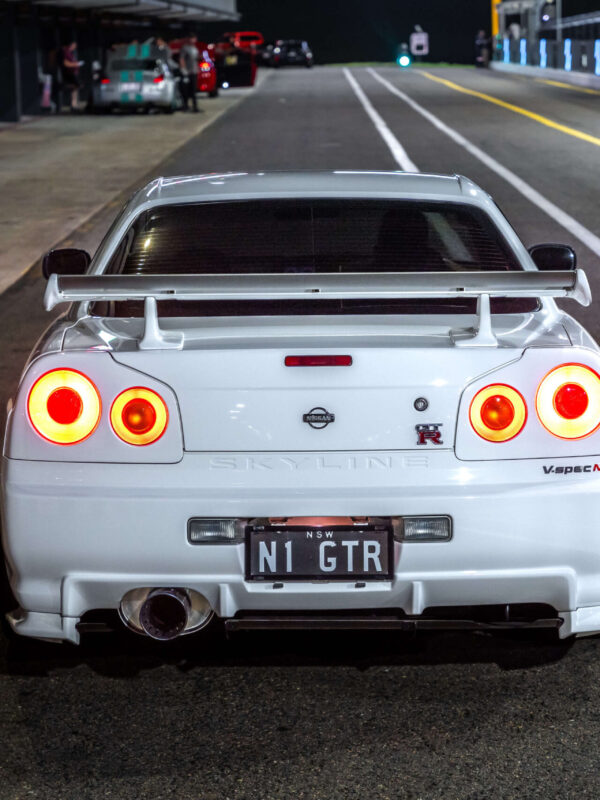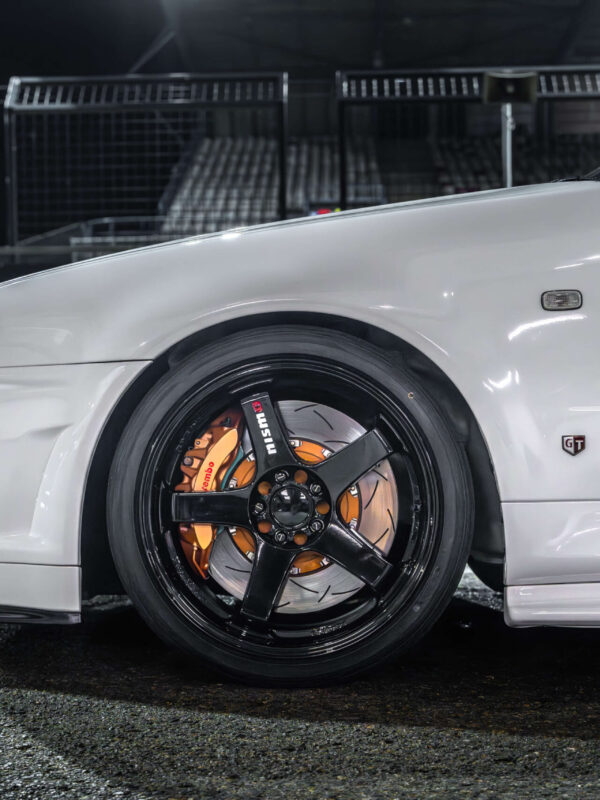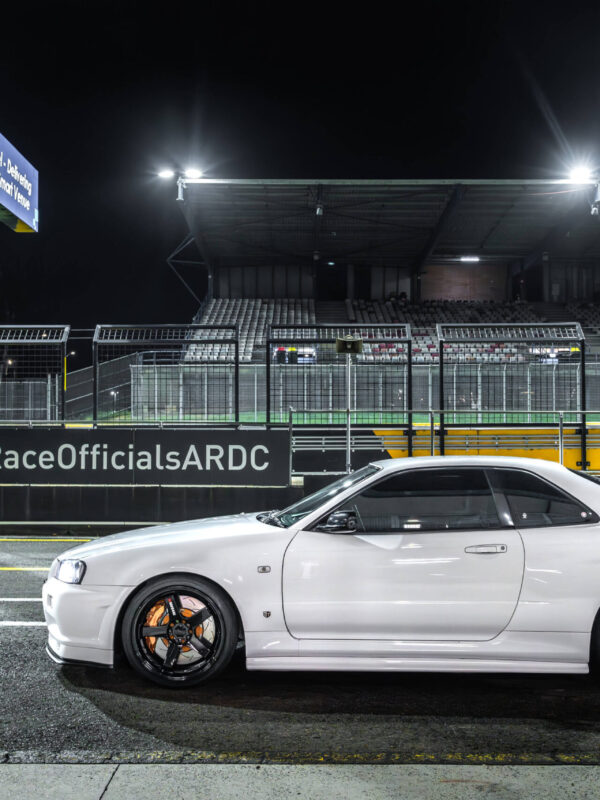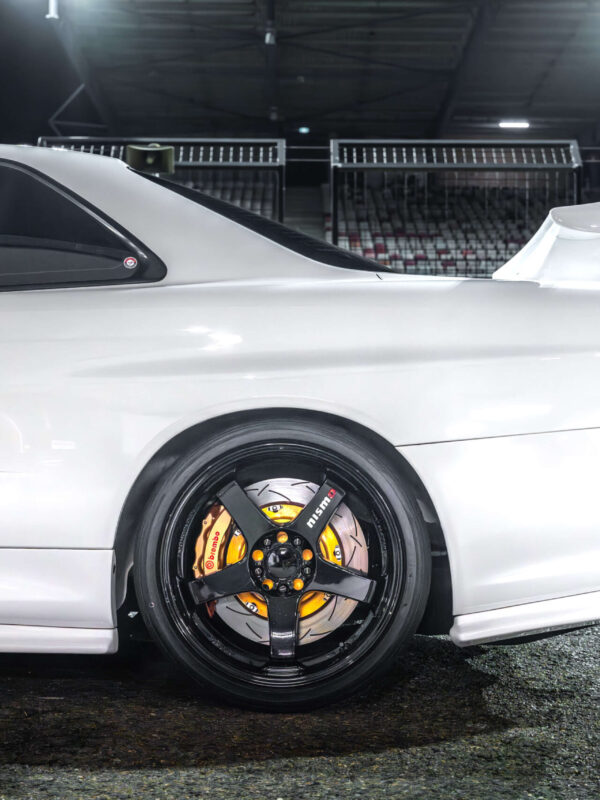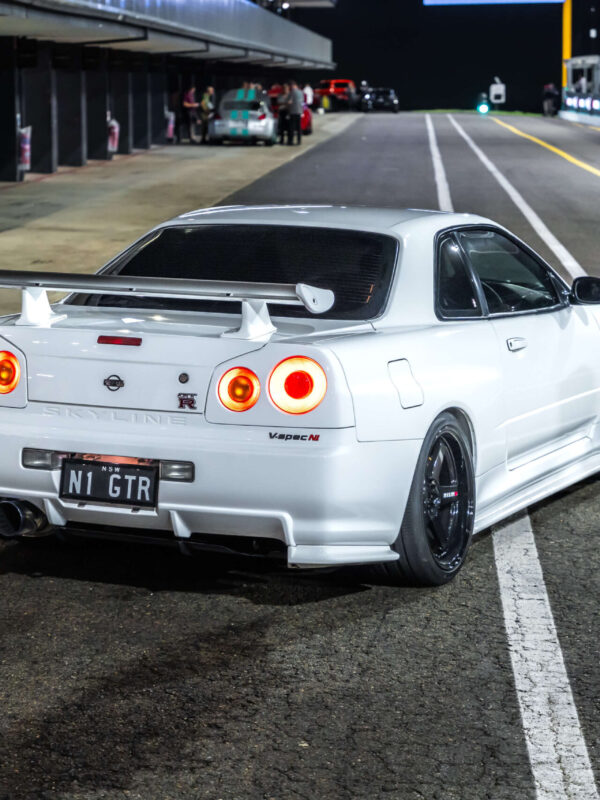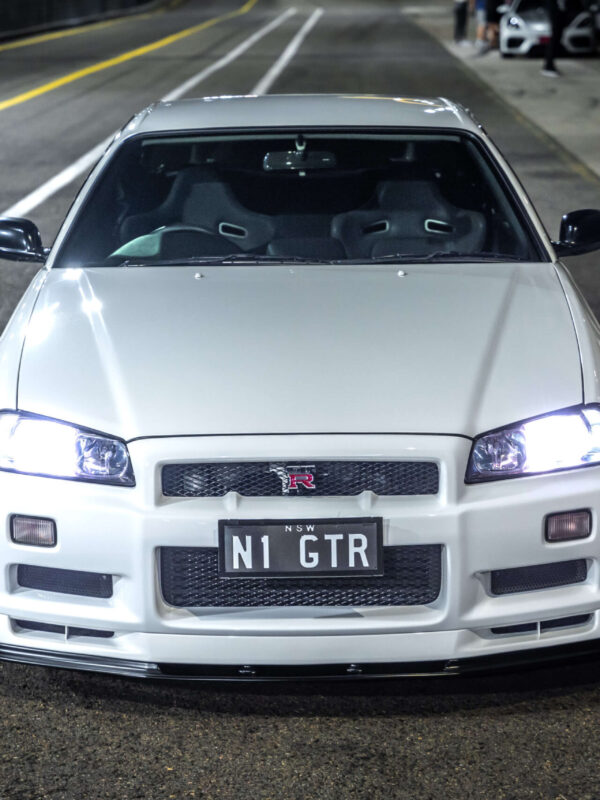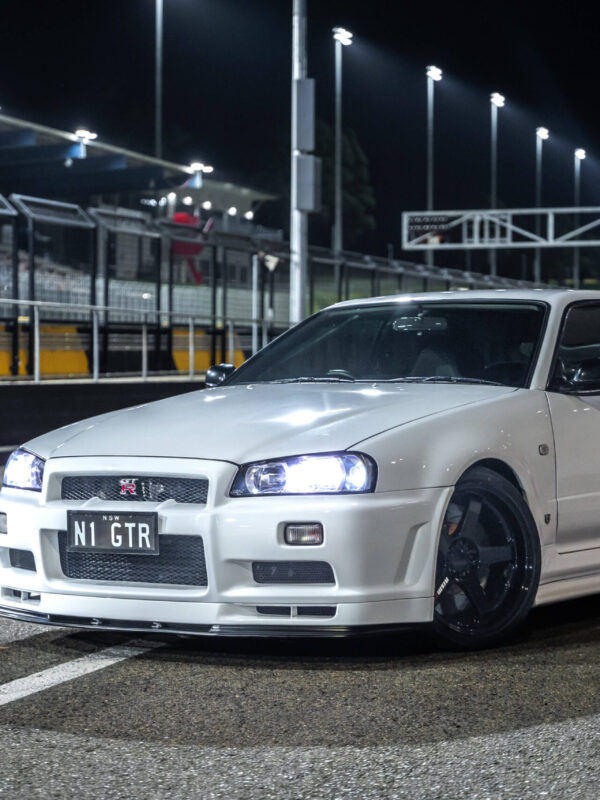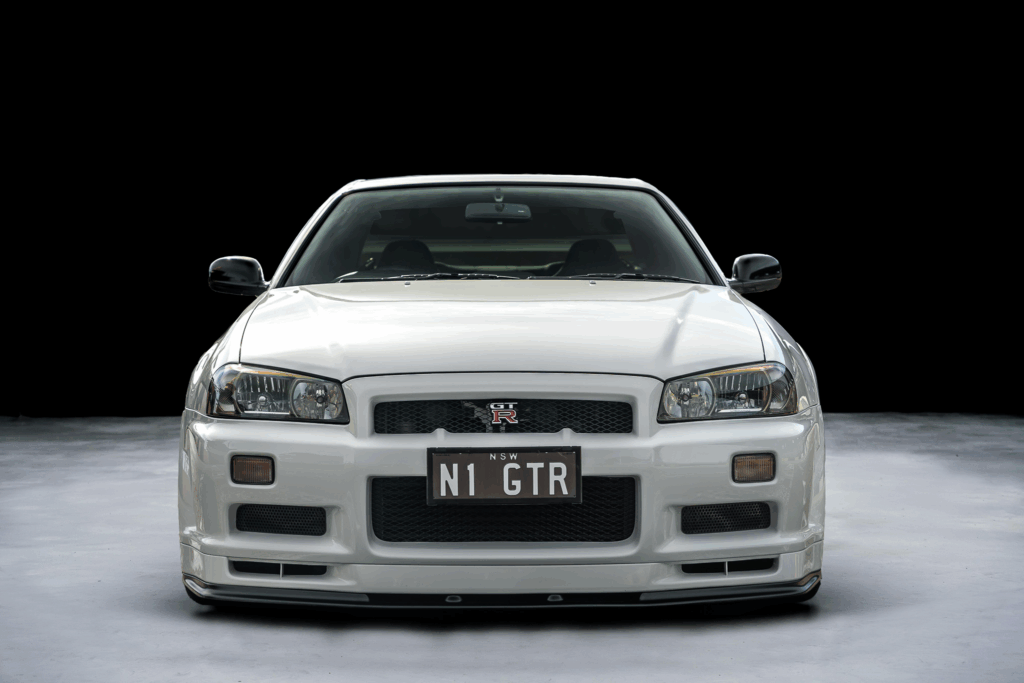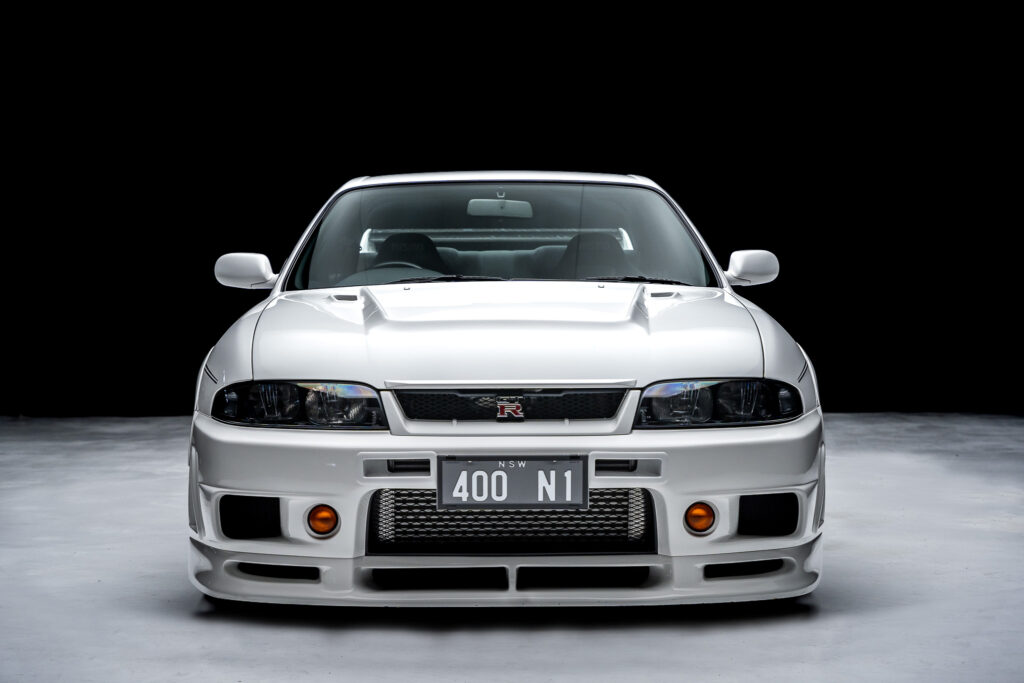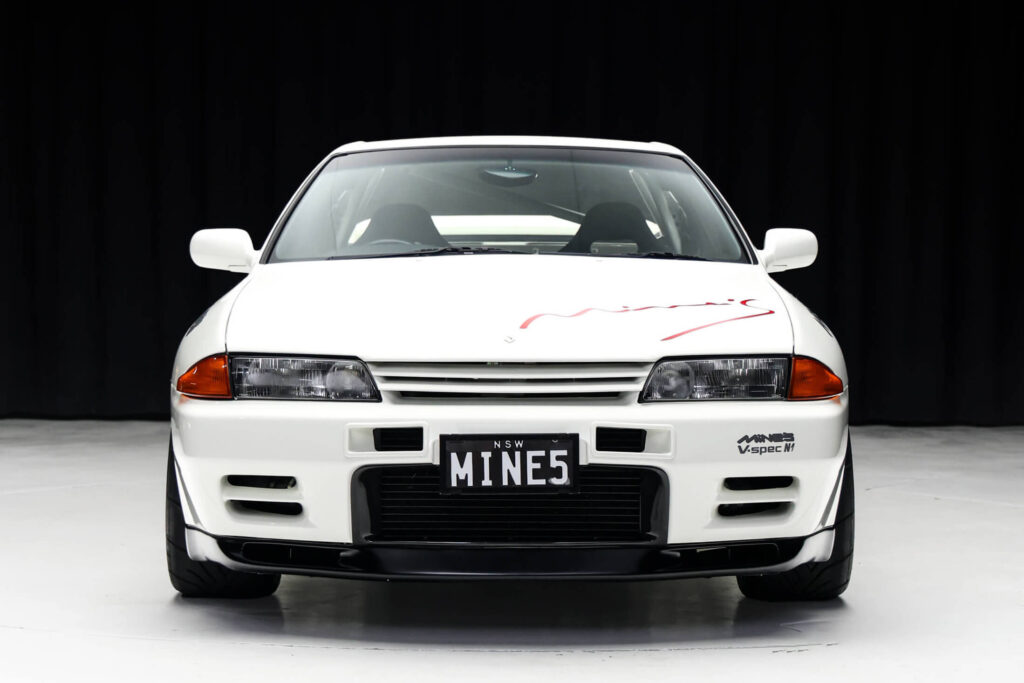Development One:
R34 GT-R V-spec N1
Before Legendary Garage was a brand recognized on a global stage—before the carbon aero kits, the dyno-busting RBs, or the high-profile media features—there was a single car, quietly tucked away in a corner of the workshop: a factory-issue R34 GT-R V·spec N1. It was not just rare. It was elemental. One of only 38 ever produced, the R34 N1 represents the most stripped-back, focused, and brutally honest version of the R34 GT-R lineage. In essence it is a blank canvas, built for motorsport. And it became the foundation on which the values of Legendary Garage were built.
This was Development One—not a project born from excess, but from respect. The team didn’t set out to enhance or reinvent the car. The goal was singular: to prove that they could meet the highest standard ever set by Nissan Motorsport, and bring a nearly extinct icon back to life without compromising its integrity.


A Factory Race Car in Disguise
The R34 N1 is often misunderstood—even by GT-R enthusiasts. While it shares a silhouette with standard R34s, its true nature lies beneath the surface. Built for Group N endurance racing homologation, it was assembled with one purpose: to withstand punishment. These cars were never meant to be daily driven, photographed at cars & coffee, or modified for Instagram clout. They were born to be beaten, tracked, rebuilt, and raced again.
Everything about the car reflects this philosophy. Its bodywork was coated in a single color—QM1 white—because it was cheap, uniform, and easy to repaint. Interior sound deadening? Gone. ABS? Deleted. Air conditioning? Optional and usually absent. Even the wiring harness was simplified. In its place, Nissan added welds, reinforcements, and the sturdiest version of the RB26DETT engine block they had ever released. The turbos used steel internals, not ceramics. The oil pump and water pump were upgraded. This wasn’t a trim level—it was a bare-knuckle chassis in waiting, a factory-issued invitation to build something extraordinary.
Reviving the N1: Purpose Over Preservation
When chassis #34 of 38 R34 GT-R V·spec N1s arrived at Legendary Garage, it carried the weight of rarity but also the scars of its past. Many would have seen it as a blank canvas for modification, a platform to impose upon. Legendary Garage chose another path. This was an R34 N1—the most uncompromising factory iteration of the R34—built as a homologation special and delivered with its own engineering intent. Our responsibility was to honor that foundation while creating a recipe that could thrive in the modern era.
The car was stripped to its core, its systems laid bare—not to return it to untouched factory form, but to ask a different question: How could the N1’s DNA be elevated by today’s best technologies without compromising its spirit? Every system was examined through that lens. The original intercooler was replaced with a larger, more efficient unit for improved charge-air control under sustained load. Induction was revised with higher-flow turbochargers, chosen for both rapid response and the ability to sustain strong boost deep into the rev range. Supporting systems were comprehensively modernized: adaptive engine management, a fuel system capable of high-output demands across multiple fuel types, an upgraded oiling system for endurance at extreme RPM, and high-energy ignition hardware to secure spark under heavy boost.
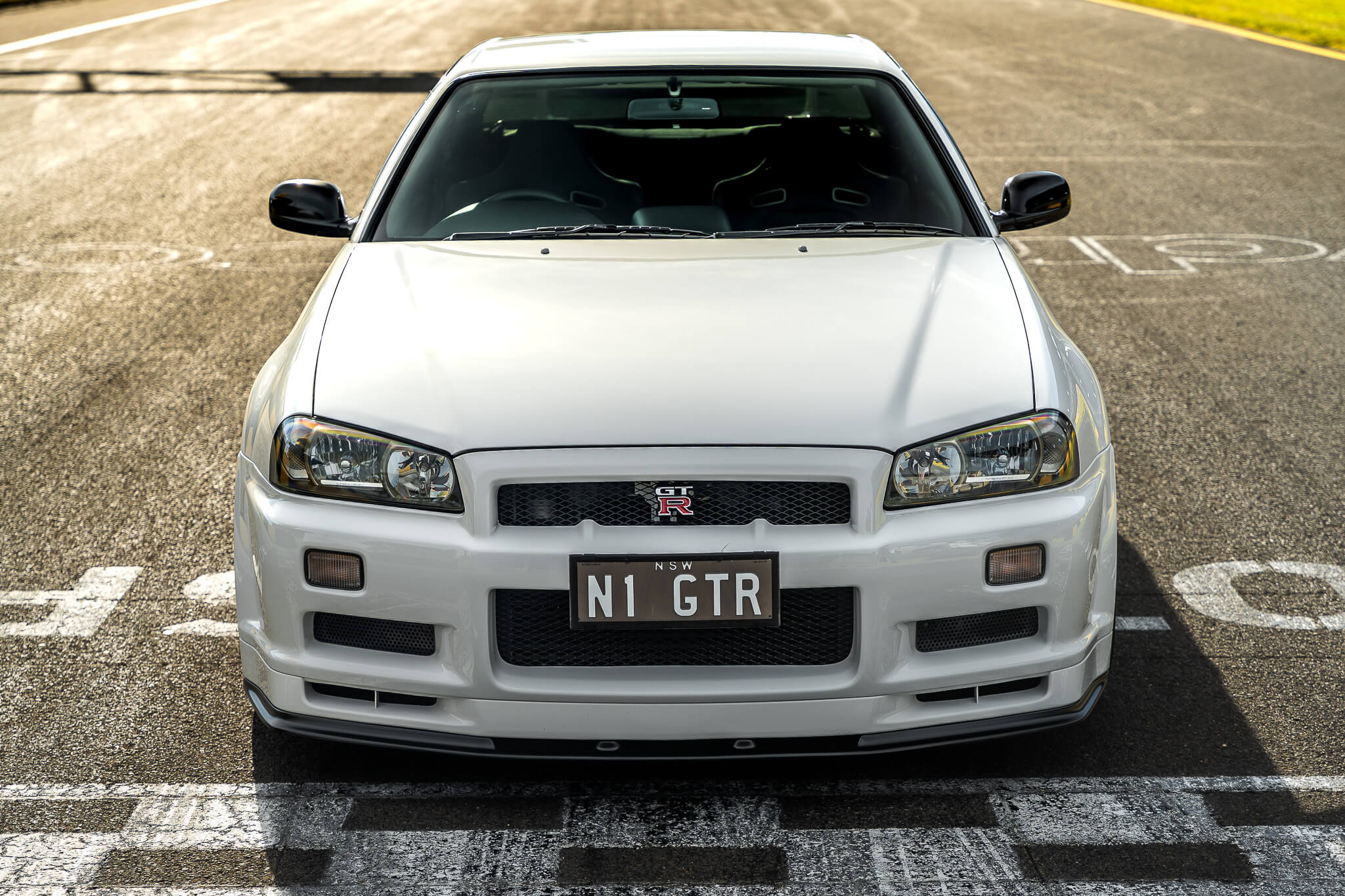

Every change was intentional—mechanical gains without unnecessary complexity. The result is an R34 N1 that retains its motorsport-bred personality while delivering a sharper edge, a broader operating range, and the composure to perform at the highest modern standard. It is a car evolved, yet unmistakably faithful to its origins.
Chassis dynamics followed the same philosophy. Suspension bushings were refreshed with motorsport-grade components, preserving the N1’s geometry while restoring precision. The braking system was elevated far beyond factory capacity, with a complete modern big-brake package adapted to the R34’s structure through a bespoke in-house solution. Inside, the cabin remained true to its stripped-back ethos—spartan, focused, and free of unnecessary embellishment. Purposeful, not ornamental.
Every decision was made with one guiding principle: purpose over preservation. The outcome is not a tribute, nor a simple restoration, but a car that feels unmistakably N1—raw, disciplined, and uncompromising—while performing to standards its original engineers could only have imagined. Development One became the foundation of a philosophy: respect the past, refine it with intent, and create machines worthy of the title Legendary.
”Production was capped at an astonishingly scant 38 units.”
Engineering Legacy, Not Performance Theater
Legendary Garage sought to build something rare: a credible standard. And that standard had to be measured against one of the most exacting factory builds ever produced by Nissan. The R34 N1 is not glamorous—but it is honest. And in that honesty lies its strength.
With the project completed, the car stood not as a showpiece, but as a baseline. A reference point from which all future builds could be calibrated. It became the template for execution: every subsequent project would be built with the same scrutiny, the same reverence for material authenticity, the same obsession with mechanical coherence.


More than that, the completed car became a living archive of the GT-R’s motorsport heritage.
It stands as one of the only R34 GT-R V-spec N1 examples in the Southern Hemisphere to undergo a complete revival, and among the very few worldwide elevated to this uncompromising standard. The N1 was never just another variant—it was the pinnacle of Nissan’s GT-R lineage, conceived as a homologation special built to satisfy the demands of motorsport. Stripped of excess, engineered for endurance, and produced in vanishingly small numbers, it embodied the Japanese belief that true performance was born not from indulgence, but from discipline.
That philosophy was not unique to Nissan. It echoed across Japan’s golden era of engineering, when Honda, Toyota, Mitsubishi, and others approached motorsport as a proving ground where production cars were sharpened into legends. These manufacturers shared a methodology: start with a pure concept, refine it through technical rigor, and deliver machines that were as focused as they were unyielding. The R34 GT-R V-spec N1 was Nissan’s ultimate expression of that ethos—a car built for circuits, not showrooms.
Legendary Garage’s revival continues this tradition. Modern technology and aftermarket advancements were applied with intent, not as replacements for heritage but as amplifiers of it. Cooling, induction, fueling, and braking were all reengineered to meet today’s performance thresholds, ensuring the car operates at a level that honors its role as Nissan’s pinnacle while thriving in the present. And yet, for all its precision and capability, it remains a car to be driven—respected, maintained, and used as it was always meant to be.
That, too, is part of the philosophy: a car’s purpose is not preservation, but performance.

Development One taught the team something that no blueprint or build sheet ever could: that legacy is not inherited—it is earned. To build something new and call it “legendary,” you must first understand what made the original great. And not just mechanically, but philosophically.
The lessons from Development One shaped every project that followed. It set the benchmark for quality control. It reinforced the value of restraint. And it demanded the discipline that would be necessary when the team moved on to Development Two—the now-renowned 400 N1.
This R34 GT-R V-spec N1 may never shout the loudest, or make the biggest numbers on the dyno. But it doesn’t need to. It whispers something more powerful: “This is where it all started.”
Perhaps most importantly, Development One proved that building the future of the GT-R platform required more than horsepower or spectacle—it required coherence. By reviving an R34 N1 to modern standards without erasing its essence, the team learned that true innovation comes not from abandoning the past, but from carrying its intent forward. That understanding became the compass for every build that followed, ensuring that each project would not just perform at the highest level, but also tell a story rooted in authenticity.


